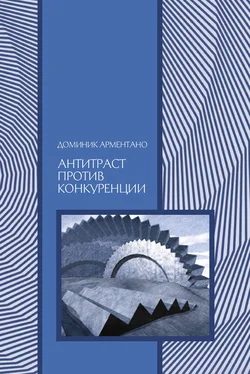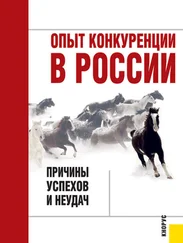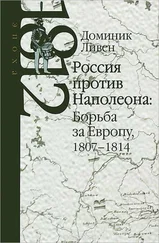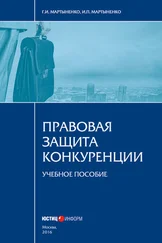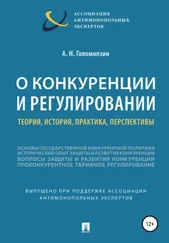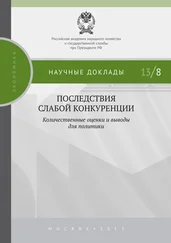Adam Smith, The Wealth of Nations (New York: Modern Library, 1937).
Ibid., pp. 682–690 и 737. Также см. Mark Blaug, Economic Theory in Retrospect, исправленное издание (Homewood, Ill.: Richard D. Irwin, 1968), p. 63.
В то же время Смит не поддерживал принятие законов, запрещающих тайные деловые соглашения, поскольку такие законы не могут исполняться «в соответствии с принципами свободы и справедливости». Смит, op. cit. , с. 128.
Elie Halevy, The Growth of Philosophic Radicalism (Boston: The Beacon Press, 1955). См. главы 3 (часть 1) и 4 (часть 3).
John Maynard Keynes, Essays in Persuasion (New York: W. W. Norton and Company, Inc., 1963), особенно pp. 312–322.
William D. Gramp, Economic Liberalism: The Classical View, Vol. 11 (New York: Random House, 1965), p. 75. Также см. Edmund Whittaker, Schools and Streams of Economic Thought (Chicago: Rand McNally Co., 1960), pp. 168–175.
H. H. Liebhafsky, American Government and Business (New York: John Wiley & Sons, 1971), pp. 23–26.
Murray N. Rothbard, Toward a Reconstruction of Utility and Welfare Economics (New York: The Center For Libertarian Studies, 1978). См. также S. P. Littlechild, “The Problem of Social Cost,” in Louis M. Spadaro, ed., New Directions in Austrian Economics (Kansas City: Sheed Andrews and McMeel, Inc., 1978), pp. 77–93.
Joseph W. McGuire, Business and Society (New York: McGraw-Hill Book Co.,1963), pp. 39–40.
Joseph W. McGuire, Business and Society (New York: McGraw-Hill Book Co.,1963), pp. 38–39.
Из словаря Webster’s New Collegiate Dictionary © 1981 под ред. G. & C. Merriam Co., Publishers Merriam-Webster Dictionaries. Печатается с разрешения.
Относительно разработки данной модели конкуренции между 1880 и 1933 годами см. Donald Dewey, The Theory of Imperfect Competition: A Radical Reconstruction (New York: Columbia University Press, 1969), pp. 5–10.
Обзор исходных предположений и функционирования модели совершенной конкуренции см. в любом современном пособии по микроэкономике, или Richard H. Leftwich, The Price System and Resource Allocation, 7th ed. (Hinsdale, Ill.: Dryden Press, 1979).
F. M. Scherer, Industrial Market Structure and Economic Performance, 2nd ed. (Chicago: Rand McNally College Publishing Company, 1980), p. 18. Противоположный взгляд см. у Harold Demsetz, “The Nature of Equilibrium in Monopolistic Competition,” Journal of Political Economy, Vol. 67 (февраль 1959), pp. 21–30, и “The Welfare and Empirical Implications of Monopolistic Competition,” Economic Journal, Vol. 74 (September 1967), p. 623.
Это широко распространенный взгляд среди экономистов-теоретиков. См. Robert L. Bishop, “Monopolistic Competition and Welfare Economics,” см. в Robert E. Keunne, Monopolistic Competition Theory: Studies in Impact (New York: John Wiley & Sons, 1967), pp. 251–263; Edwin Mansfield, Microeconomics (New York: W. W. Norton and Company, 1975), pp. 282, 315; Willard Mueller, A Primer on Monopoly and Competition (New York: Random House, 1970), p. 8; Richard E. Low, “Introduction,” см. в R. E. Low, ed., The Economics of Antitrust: Competition and Monopoly (Englewood Cliffs, N.J..: Prentice-Hall, Inc., 1968), pp. 1–42. См. также Lee Preston и Benjamin King, “Proving Competition,” The Antitrust Bulletin, Vol. 24, № 4 (Winter 1979), p. 787.
См. обсуждение Roger Sherman в Antitrust Bulletin (January 1976), p. 947. См. также Milton H. Spencer, Contemporary Microeconomics (New York: Worth Publishers, Inc., 1975), pp. 240–243, и Peter Asch, “Industrial Concentration, Efficiency and Antitrust Reform, ” The Antitrust Bulletin, Vol. 22, № 1 (Spring 1977), pp. 129–143, esp. p. 130.
Douglas F. Greer, Industrial Organization and Public Policy (New York: Macmillan Publishing Co., 1980), p. 44.
Leftwich, p. 32 [Copyright 1979, Dryden Press, Inc., напечатано с разрешения Dryden Press, Inc.].
Антуан Курно (Antoine Cournot) сформулировал это в 1838 году. См. Joseph A. Schumpeter, History of Economic Analysis (New York: Oxford University Press, 1954), pp. 972–977. И несмотря на некоторые ограничения, эта формулировка применяется до сих пор. См. Roger A. McCain, Markets, Decisions, and Organizations (Englewood Cliffs, N.J.: Prentice Hall, Inc., 1981), pp. 257–259.
“Monopoly and Resource Allocation”, American Economic Review, Papersand Proceedings, Vol. 44 (May 1954), p. 77.
William Long, Richard Schramm и Robert Tollison, “The Economic Determinants of Antitrust Activity,” Journal of Law and Economics, Vol. 16, № 2 (October 1973), pp. 351–364. См. также Philip Areeda, Antitrust Analysis: Problems, Text, Cases, 2nd ed. (Little, Brown & Company, 1974), pp. 12–23, особенно p. 195.
Oliver Williamson, “Economics as an Antitrust Defense: The Welfare Tradeoffs,” American Economic Review , Vol. 68, № 18 (March 1968), и исправление в American Economic Review, Vol. 69 (December 1969), pp. 954–959. Превосходное обсуждение модели издержек и выгод см. в Wesley J. Liebeler, “Market Power and Competitive Superiority in Concentrated Industries,” UCLA Law Review, Vol. 25 (1979), pp. 1232–1297.
Данная позиция наиболее ярко выражена Робертом Борком (Robert Bork) в The Antitrust Paradox (New York: Basic Books, 1978).
Richard A. Posner, Antitrust Law: An Economic Perspective (Chicago: University of Chicago Press, 1976), pp. 10–15.
William Baumol, Economic Theory and Operations Analysis (Englewood Cliffs, N.J.: Prentice-Hall, 1961), p. 257.
R. G. Lipsey и K. Lancaster, “The General Theory of Second Best,” Review of Economic Studies , Vol. 24 (1956–57), p. 11.
Это признается в некоторых более ранних и более аккуратных работах по микроэкономике. См. Albert Levenson и Babette Solon, Outline of Price Theory (New York: Holt, Rinehart and Winston, Inc., 1964), p. 111.
Читать дальше
